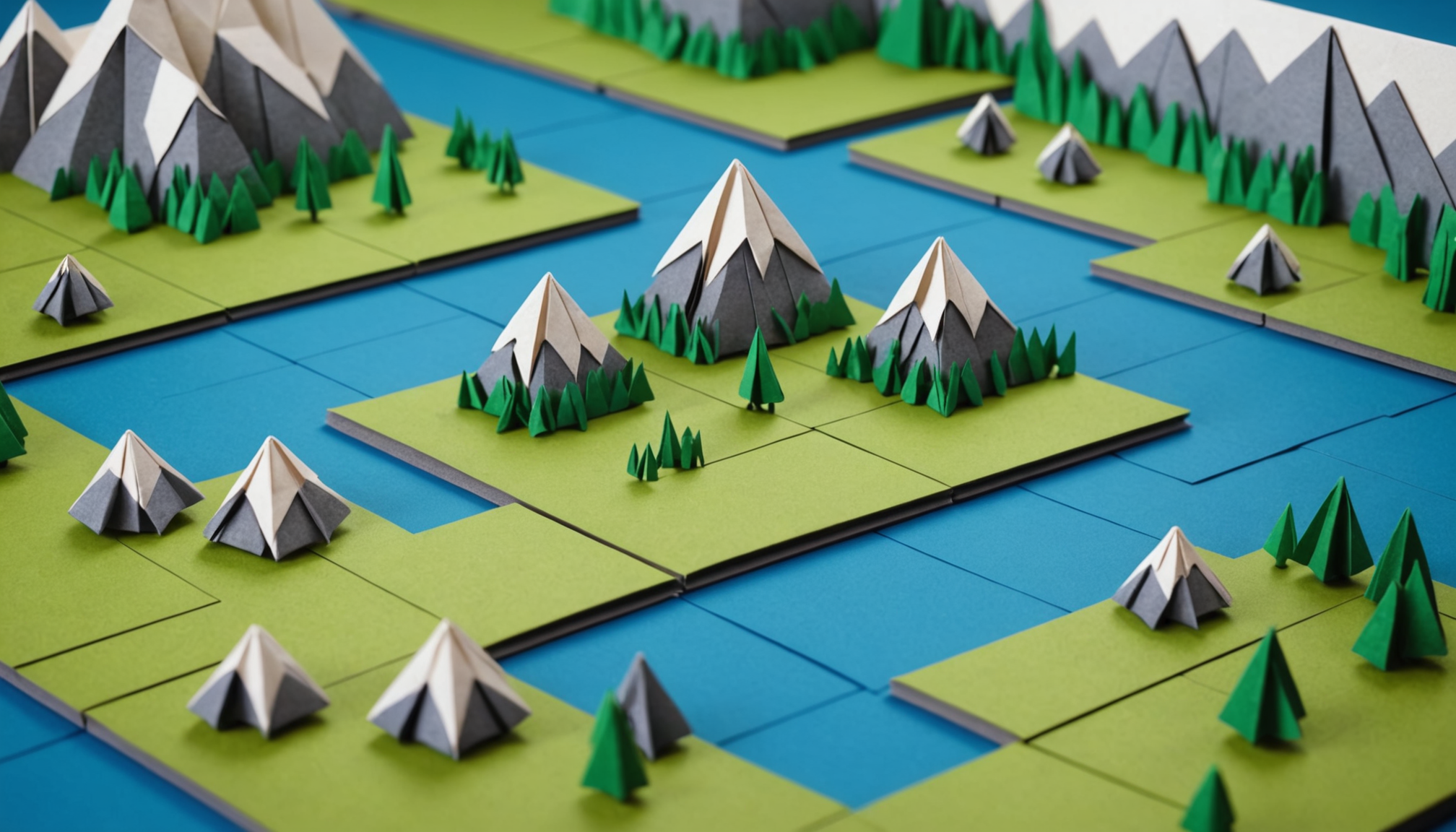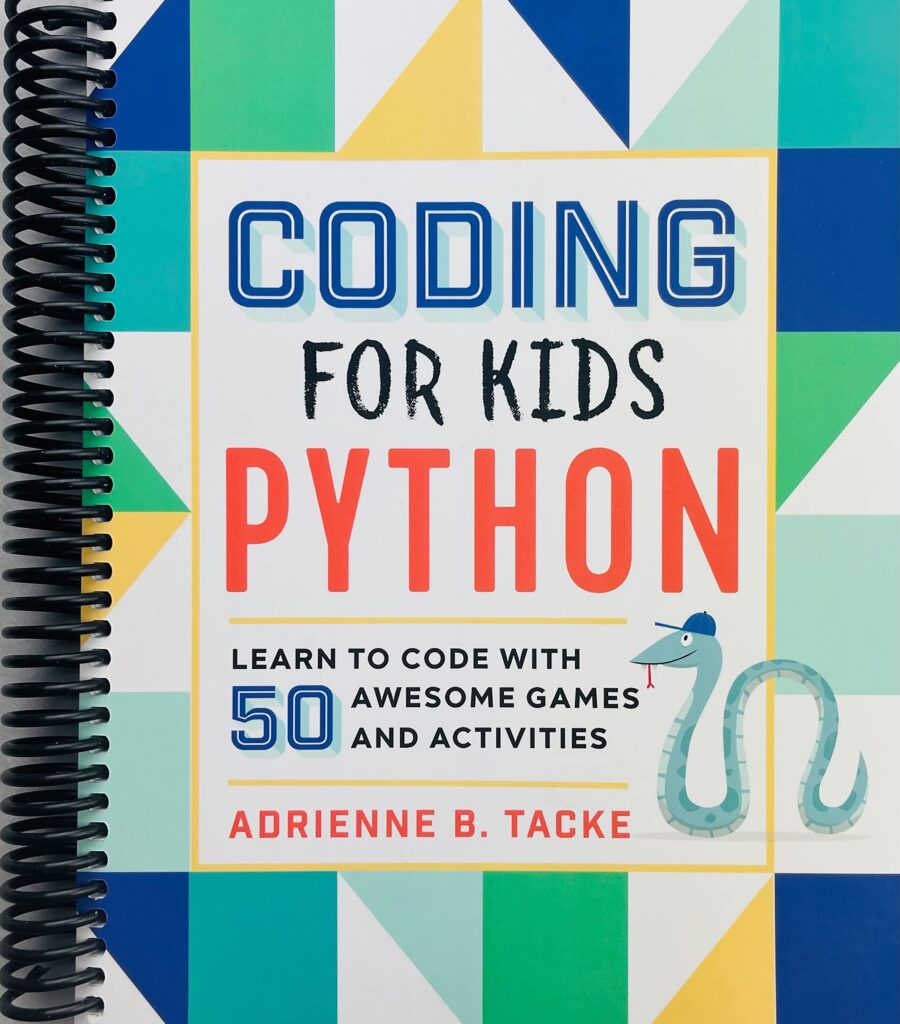
In the context of tile-based games, the very essence of gameplay emerges from the interaction of tiles, a veritable lattice of possibilities that beckons the player with tantalizing choices. Each tile, a discrete entity, serves as both a building block and a narrative thread, weaving together the fabric of an interactive tapestry. The foundation of these mechanics lies in the ability to recognize and manipulate this grid-like structure, where each tile corresponds to a specific state or property, which, in turn, influences the overall experience.
Imagine a simple grid composed of individual squares, each representing a specific terrain type—grass, water, mountains, or even obstacles. This seemingly mundane arrangement is, in fact, the bedrock upon which the game is built. The key to understanding tile-based mechanics is to grasp how these tiles interact with one another and how they can be transformed based on player actions.
To illustrate this concept, let us explore a basic implementation in Python using the Pygame library. The following code snippet showcases a simple grid where each tile can be initialized to a specific type:
import pygame
# Constants for the grid
TILE_SIZE = 32
GRID_WIDTH = 10
GRID_HEIGHT = 10
# Define tile types
TILE_TYPES = {
'grass': (0, 255, 0),
'water': (0, 0, 255),
'mountain': (128, 128, 128),
}
# Initialize the grid
grid = [[None for _ in range(GRID_WIDTH)] for _ in range(GRID_HEIGHT)]
# Function to populate the grid with random tile types
def populate_grid():
for y in range(GRID_HEIGHT):
for x in range(GRID_WIDTH):
tile_type = 'grass' # Default tile type
if (x + y) % 5 == 0:
tile_type = 'water'
elif (x + y) % 3 == 0:
tile_type = 'mountain'
grid[y][x] = tile_type
# Create the game window
pygame.init()
screen = pygame.display.set_mode((GRID_WIDTH * TILE_SIZE, GRID_HEIGHT * TILE_SIZE))
# Populate the grid
populate_grid()
# Main game loop
running = True
while running:
for event in pygame.event.get():
if event.type == pygame.QUIT:
running = False
# Draw the grid
for y in range(GRID_HEIGHT):
for x in range(GRID_WIDTH):
tile_color = TILE_TYPES[grid[y][x]]
pygame.draw.rect(screen, tile_color, (x * TILE_SIZE, y * TILE_SIZE, TILE_SIZE, TILE_SIZE))
pygame.display.flip()
pygame.quit()
This snippet outlines the creation of a grid where each tile is assigned a type based on a simple algorithm, illustrating the randomness and variability inherent in tile assignment. Ponder the implications of this grid: the player’s navigation could lead to vast fields of grass, treacherous waters, or the looming presence of mountains, engaging them reflecting the renewed demand for constructed from these simple yet profound building blocks.
As we delve deeper into the mechanics of tile-based games, we begin to understand that each tile is more than just a color on the screen; it’s a symbol of potential actions and interactions, a node in the network of gameplay. The player’s journey through this lattice is dictated by the rules governing the tiles, which can change dynamically as the game progresses. For instance, tiles may transform based on player actions, or new tiles may appear as the narrative unfolds, presenting opportunities for exploration and strategic decision-making.
Apple Watch SE 3 [GPS 40mm] Smartwatch with Starlight Aluminum Case with Starlight Sport Band - S/M. Fitness and Sleep Trackers, Heart Rate Monitor, Always-On Display, Water Resistant
20% OffImagining the Grid: Visualizing the Interplay of Tiles and Terrain
To further visualize the interplay of tiles and terrain, we can enhance our grid system by introducing distinct visual representations for each tile type, thereby enriching the player’s experience. Imagine a world where tiles not only serve a functional purpose but also convey meaning through their appearance. This can be achieved through the use of images or sprites that represent each terrain type. Below is an example of how to implement this in Pygame:
import pygame
# Initialize Pygame
pygame.init()
# Constants for the grid
TILE_SIZE = 32
GRID_WIDTH = 10
GRID_HEIGHT = 10
# Load tile images
grass_image = pygame.image.load('grass.png')
water_image = pygame.image.load('water.png')
mountain_image = pygame.image.load('mountain.png')
# Define tile types
TILE_IMAGES = {
'grass': grass_image,
'water': water_image,
'mountain': mountain_image,
}
# Initialize the grid
grid = [[None for _ in range(GRID_WIDTH)] for _ in range(GRID_HEIGHT)]
# Function to populate the grid with random tile types
def populate_grid():
for y in range(GRID_HEIGHT):
for x in range(GRID_WIDTH):
tile_type = 'grass' # Default tile type
if (x + y) % 5 == 0:
tile_type = 'water'
elif (x + y) % 3 == 0:
tile_type = 'mountain'
grid[y][x] = tile_type
# Create the game window
screen = pygame.display.set_mode((GRID_WIDTH * TILE_SIZE, GRID_HEIGHT * TILE_SIZE))
# Populate the grid
populate_grid()
# Main game loop
running = True
while running:
for event in pygame.event.get():
if event.type == pygame.QUIT:
running = False
# Draw the grid
for y in range(GRID_HEIGHT):
for x in range(GRID_WIDTH):
tile_image = TILE_IMAGES[grid[y][x]]
screen.blit(tile_image, (x * TILE_SIZE, y * TILE_SIZE))
pygame.display.flip()
pygame.quit()
In this example, we replace the solid color tiles with images that represent the various terrain types. The function pygame.image.load is used to load the images for grass, water, and mountains, thereby transforming the visual landscape of our grid. This transition from color to imagery not only enhances the aesthetic appeal but also allows for a more immersive experience, as players can now visually discern the different terrains and their potential implications within the game.
Furthermore, the dynamic nature of tile interactions can be visualized through animations and transitions. Picture a scenario where a player traverses from grass to water; the visual shift could be accompanied by a subtle animation, such as rippling water or a gradual fading effect, thereby creating a more engaging and responsive environment. This interplay between tiles and animations can be achieved through careful management of the game loop and the rendering process, as demonstrated in the following snippet:
def animate_transition(old_tile, new_tile):
# Placeholder for animation logic
pass
# Main game loop
running = True
while running:
for event in pygame.event.get():
if event.type == pygame.QUIT:
running = False
# Example of transitioning from one tile to another
current_tile = grid[5][5] # Assuming we are moving to this tile
new_tile = 'water' # New tile type
if current_tile != new_tile:
animate_transition(current_tile, new_tile)
grid[5][5] = new_tile # Update the grid
# Draw the grid
for y in range(GRID_HEIGHT):
for x in range(GRID_WIDTH):
tile_image = TILE_IMAGES[grid[y][x]]
screen.blit(tile_image, (x * TILE_SIZE, y * TILE_SIZE))
pygame.display.flip()
pygame.quit()
This snippet outlines how one might conceptualize an animation function that would facilitate a smooth transition between tiles. The essence of such animations lies in their ability to convey the significance of terrain changes, inviting the player to engage more deeply with the game world. When executed thoughtfully, these visual cues enhance the narrative experience, making each movement across the grid feel like a meaningful journey rather than mere traversal.
Animating Movement: The Dance of Sprites Across the Canvas
# Continuing with the animation logic
def animate_transition(old_tile, new_tile):
# Simple placeholder for animation logic
# Example: Gradually change color or display animation based on tile change
animation_duration = 10 # Number of frames for the animation
for frame in range(animation_duration):
# Logic to interpolate between old_tile and new_tile visually
# This could involve changing colors or displaying an animation
pass # Replace with actual animation logic
# Main game loop
running = True
while running:
for event in pygame.event.get():
if event.type == pygame.QUIT:
running = False
# Example of transitioning from one tile to another
current_tile = grid[5][5] # Assuming we are moving to this tile
new_tile = 'water' # New tile type
if current_tile != new_tile:
animate_transition(current_tile, new_tile)
grid[5][5] = new_tile # Update the grid
# Draw the grid
for y in range(GRID_HEIGHT):
for x in range(GRID_WIDTH):
tile_image = TILE_IMAGES[grid[y][x]]
screen.blit(tile_image, (x * TILE_SIZE, y * TILE_SIZE))
pygame.display.flip()
pygame.quit()
In the exploration of animating movement, one must not overlook the significance of sprite management. Sprites, the dynamic representatives of characters or objects, become the actors upon our tile-based stage, moving gracefully across the grid. The careful orchestration of these sprites can breathe life into the game, transforming static visuals into a vibrant, pulsating world. To illustrate this, consider the structure of a sprite class that encapsulates both position and behavior:
class Sprite:
def __init__(self, image, position):
self.image = image
self.position = position
def move(self, dx, dy):
self.position[0] += dx
self.position[1] += dy
def draw(self, surface):
surface.blit(self.image, self.position)
# Create a sprite instance
player_image = pygame.image.load('player.png')
player_sprite = Sprite(player_image, [5 * TILE_SIZE, 5 * TILE_SIZE])
# Main game loop
running = True
while running:
for event in pygame.event.get():
if event.type == pygame.QUIT:
running = False
# Move the player sprite based on input
keys = pygame.key.get_pressed()
if keys[pygame.K_LEFT]:
player_sprite.move(-TILE_SIZE, 0)
if keys[pygame.K_RIGHT]:
player_sprite.move(TILE_SIZE, 0)
if keys[pygame.K_UP]:
player_sprite.move(0, -TILE_SIZE)
if keys[pygame.K_DOWN]:
player_sprite.move(0, TILE_SIZE)
# Draw the grid and the sprite
for y in range(GRID_HEIGHT):
for x in range(GRID_WIDTH):
tile_image = TILE_IMAGES[grid[y][x]]
screen.blit(tile_image, (x * TILE_SIZE, y * TILE_SIZE))
player_sprite.draw(screen)
pygame.display.flip()
pygame.quit()
In this example, we define a simple Sprite class that encapsulates the essence of an entity within the game—its appearance and its movement. The move method allows the sprite to traverse the grid, while the draw method renders it onto the screen, effectively bridging the gap between the logical grid and the visual representation. The player’s navigation, dictated by keyboard inputs, allows for a seamless interaction with the tile-based world, positioning them as an active participant in the unfolding narrative.
As we dance through this realm of sprites and tiles, we must also consider the timing of animations—the rhythm that governs their transitions. Each movement must feel fluid, not abrupt, a delicate choreography that enhances the player’s immersion. Introducing frame-based timing can provide a structure for these animations, allowing for smooth transitions that reflect the movement’s pace. This might manifest through control over frame rates and the timing of sprite updates, as illustrated in the following code snippet:
# Frame rate control
clock = pygame.time.Clock()
fps = 60 # Frames per second
# Main game loop
running = True
while running:
for event in pygame.event.get():
if event.type == pygame.QUIT:
running = False
# Handle sprite movement and animation
# (as previously defined)
# Draw everything
# (as previously defined)
pygame.display.flip()
# Control the frame rate
clock.tick(fps)
pygame.quit()
In this snippet, we introduce a clock to regulate the frame rate, ensuring that the animation proceeds at a consistent speed. The call to clock.tick(fps) limits the game loop to a specific number of frames per second, thereby maintaining a steady rhythm in the sprite’s movements and animations. The careful calibration of this timing can dramatically affect the perception of speed and fluidity, drawing the player deeper into the experience.
Beyond the Game: Philosophical Reflections on Interactivity and Design
As we glimpse the philosophical underpinnings of interactivity and design in tile-based games, we encounter a paradoxical dance between structure and chaos. The rigid grid, with its neatly defined tiles, sets the stage for a myriad of emergent behaviors that defy the simplicity of their construction. Each interaction with the grid—each movement across tiles—echoes larger questions about agency, consequence, and the very nature of play. Do we, as players, truly navigate this constructed world, or are we merely following a script written by the unseen hand of the designer?
Ponder the implications of choice within this lattice of tiles. Each tile does not merely represent a physical space to be traversed; it embodies opportunities for exploration and the potential for narrative development. The player’s decisions ripple through the grid, transforming the landscape in ways both anticipated and unexpected. This transformation can be likened to a conversation between the player and the game itself, where each action reverberates, creating a dialogue this is both meaningful and profound. In this sense, the game transcends its role as mere entertainment; it becomes a medium for existential exploration.
To illustrate this interaction more vividly, let us ponder the dynamics of tile transformations. Imagine a tile that, upon being traversed, shifts from grass to water, reflecting a deeper narrative or challenge. The player, upon encountering this transformation, must adapt their strategy, re-evaluating their choices and possibly even redefining their goals. This moment of decision is a microcosm of the broader philosophical questions about change and adaptability in life itself. The following snippet demonstrates how one might implement such a transformation in code:
def transform_tile(x, y, new_tile_type):
grid[y][x] = new_tile_type # Update the grid with the new tile type
# Additional logic could be added here for animation or effects
if new_tile_type == 'water':
print(f'Tile at ({x}, {y}) transformed to water!')
elif new_tile_type == 'mountain':
print(f'Tile at ({x}, {y}) transformed to mountain!')
# Example of transforming a tile
transform_tile(4, 4, 'water')
In this code, the function transform_tile serves as an agent of change, a reminder that within the constraints of the grid lies the potential for evolution. This reflects the broader philosophical perspective that change is not merely an obligation but an invitation to engage with the unknown. The act of transforming a tile becomes a moment of reflection, allowing players to consider the consequences of their actions—not only within the game but in their own lives.
Moreover, as we consider the philosophical ramifications of interactivity, we must also explore the role of failure and success within the tile-based framework. Each tile, while offering possibilities, also presents risks. A player’s journey may lead them into perilous waters, requiring them to navigate not just the physical landscape but also their emotional responses to failure. In this way, tile-based games become a crucible for resilience, teaching players that setbacks can be stepping stones towards greater understanding and mastery. This interplay can be represented in code through a simple collision detection mechanism:
def check_collision(player_position):
x, y = player_position
tile_type = grid[y][x]
if tile_type == 'water':
print('You have encountered water! You must find a way to cross it.')
# Logic for handling the player’s response to the water obstacle
elif tile_type == 'mountain':
print('You cannot pass through the mountain!')
# Logic for handling the player’s response to the mountain obstacle
# Example of checking collision with the player’s current position
check_collision(player_sprite.position)
This collision detection encapsulates the essence of challenge in gameplay—an invitation to reflect on one’s choices and adapt strategies. The game, in its intricate web of tiles and interactions, mirrors the complexities of life itself, where obstacles are not merely hindrances but catalysts for growth and exploration. This philosophical lens urges us to consider the deeper meanings embedded within our interactions, illuminating the significance of every movement across the grid.


![Apple Watch SE 3 [GPS 40mm] Smartwatch with Starlight Aluminum Case with Starlight Sport Band - S/M. Fitness and Sleep Trackers, Heart Rate Monitor, Always-On Display, Water Resistant #1](https://m.media-amazon.com/images/I/41oGW9CaEmL._SL100_.jpg)
![Apple Watch SE 3 [GPS 40mm] Smartwatch with Starlight Aluminum Case with Starlight Sport Band - S/M. Fitness and Sleep Trackers, Heart Rate Monitor, Always-On Display, Water Resistant #2](https://m.media-amazon.com/images/I/41lfHoQaJzL._SL100_.jpg)
![Apple Watch SE 3 [GPS 40mm] Smartwatch with Starlight Aluminum Case with Starlight Sport Band - S/M. Fitness and Sleep Trackers, Heart Rate Monitor, Always-On Display, Water Resistant #3](https://m.media-amazon.com/images/I/41X9r-P8nHL._SL100_.jpg)
![Apple Watch SE 3 [GPS 40mm] Smartwatch with Starlight Aluminum Case with Starlight Sport Band - S/M. Fitness and Sleep Trackers, Heart Rate Monitor, Always-On Display, Water Resistant #4](https://m.media-amazon.com/images/I/412nGtP6O4L._SL100_.jpg)
![Apple Watch SE 3 [GPS 40mm] Smartwatch with Starlight Aluminum Case with Starlight Sport Band - S/M. Fitness and Sleep Trackers, Heart Rate Monitor, Always-On Display, Water Resistant #5](https://m.media-amazon.com/images/I/31MvuvDInRL._SL100_.jpg)





